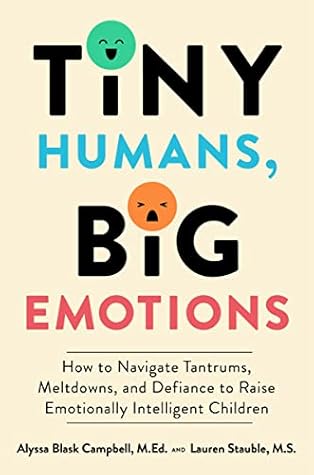More on this book
Community
Kindle Notes & Highlights
Read between
December 30, 2024 - January 4, 2025
Collaborative Emotion Processing is a way to teach and learn how to feel stuff with other people that builds long-term skills for emotional intelligence.
It’s natural for parents to want their kids to be happy, but life isn’t designed for us to feel happy all the time.
There are five components to emotional intelligence: self-awareness, self-regulation, empathy, motivation, and social skills.
The key to self-regulation, empathy, and social skills is first developing self-awareness. When we are aware of what’s happening in our bodies and minds, we can regulate and connect with the world around us. We have access to choosing our words and actions instead of operating from a place of threat and reactivity.
One of the best ways to do this is to apply Daniel Goleman’s work on motivation to our relationships with children. This has to do with how we talk to ourselves and children, how we celebrate our growth and theirs—no matter how small—by choosing encouragement and compassion over perfectionism, having a willingness to practice, and getting help when we need it.3
This popular statement found on wall decals, often attributed to Maya Angelou, resonates with me: “I’ve learned that people will forget what you’ve said, people will forget what you did, but they will never forget the way you made them feel.”
Even before an infant can understand our words, they are learning to understand what we mean from our tone of voice, our body language, and our volume level. We communicate with children not just with the words we say, but how we say them, what our bodies say, and how we react in different scenarios.
When you talk to children, or to the adults in your life in the presence of children, it’s way more likely you’ll get the language and behavior you’re looking for if you intentionally model it. Even when you think they’re too young to understand, they are always paying attention!
Teaching works only when someone is ready to learn the new skill; in other words, they have the foundational skills, and they feel emotionally safe.
The five steps presented by Gottman and DeClaire are: Be aware of a child’s emotions. Recognize emotional expression as an opportunity for intimacy and teaching. Listen empathetically and validate a child’s feelings. Label emotions in words a child can understand. Help a child discover appropriate ways to solve a problem or deal with an upsetting situation.2
We often tell children what they can’t do, but what if we included what they can do?


